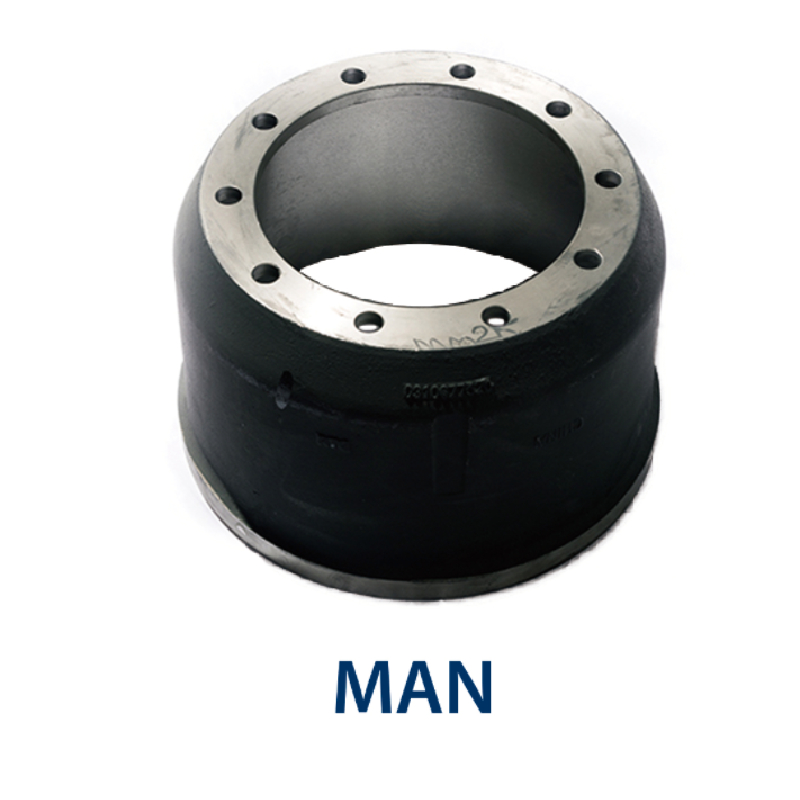des . 21, 2024 09:26 Back to list
how to remove a seized brake drum
How to Remove a Seized Brake Drum A Step-by-Step Guide
Dealing with a seized brake drum can be a daunting task for many car enthusiasts and DIY mechanics alike. It’s not uncommon for brake drums to become stuck due to corrosion, rust, or simply years of wear and tear. However, with the right tools and a bit of patience, you can successfully remove a seized brake drum. This article will provide you with a comprehensive step-by-step guide to tackle this issue.
Tools and Materials Needed
Before you start the removal process, gather the following tools and materials
- Wheel chocks - Jack and jack stands - Lug wrench - Ratchet and socket set - Brake drum puller (if needed) - Hammer - Penetrating oil (like WD-40) - Protective eyewear and gloves - Brake cleaner - Wire brush
Step 1 Safety First
Safety is paramount when working on your vehicle. Start by parking your car on a flat surface and engaging the parking brake. Use wheel chocks to secure the opposite wheels and prevent any movement while you work. Wear protective eyewear and gloves to shield yourself from debris and sharp edges.
Step 2 Loosen Lug Nuts
Using a lug wrench, loosen the lug nuts on the wheel equipped with the seized brake drum. It’s best to do this while the wheel is still on the ground, as it provides stability. Do not remove the lug nuts completely; just loosen them enough so that they can be taken off easily when the wheel is lifted.
Step 3 Raise the Vehicle
Using the jack, lift the vehicle until the wheel is elevated off the ground. Place jack stands securely under the vehicle to provide additional support. Never rely solely on the jack for support while you work.
Step 4 Remove the Wheel
Now that the vehicle is secure, remove the loosened lug nuts and take off the wheel
. Set the wheel aside in a safe location where it won’t obstruct your workspace.Step 5 Inspect the Brake Drum
how to remove a seized brake drum

With the wheel removed, take a closer look at the brake drum. Sometimes, the drum may be stuck due to rust, dirt, or the brake shoes being pressed against it. Use penetrating oil to spray around the edge of the drum where it meets the backing plate and let it sit for a few minutes to loosen any rust.
Step 6 Gently Tap the Drum
Using a hammer, gently tap around the perimeter of the brake drum. This impact can help break the bond created by rust or corrosion. Be careful not to hit too hard, as you might damage the drum. If needed, continue to apply penetrating oil as you work.
Step 7 Use a Brake Drum Puller
If the drum remains stubbornly stuck, it may be time to use a brake drum puller. This tool can exert considerable force to pull the drum off without damaging it. Follow the instructions that come with your puller, ensuring that it’s securely fastened to the drum before applying pressure.
Step 8 Clean and Inspect
Once the drum is removed, take the opportunity to clean the brake components. Use a wire brush to remove any rust or debris from the backing plate and brake shoes. Spray brake cleaner on all parts to ensure they are free from contaminants that could affect braking performance.
Step 9 Reassemble
After cleaning and inspection, replace any worn or damaged components as necessary. If the drum is still in good condition, you can reinstall it. Make sure the brake shoes are adjusted correctly, allowing for a smooth fit of the drum.
Step 10 Reinstall the Wheel
With the brake drum back in place, it’s time to reinstall the wheel. Place the wheel back onto the hub and hand-tighten the lug nuts. Lower the vehicle back to the ground using the jack and remove the jack stands. Finish by tightening the lug nuts securely using a cross pattern for even torque.
Conclusion
Removing a seized brake drum can be a labor-intensive process, but it’s one that many can accomplish with the right approach. Ensure you take safety precautions, use the appropriate tools, and don’t rush the job. If all else fails and you find yourself overwhelmed, don’t hesitate to seek professional assistance. Regular maintenance of your braking system can help prevent issues like seized drums in the future, keeping you safe on the road. Happy repairing!
-
Discover HYUNDA: Innovative Vehicles, Equipment & Solutions
NewsAug.14,2025
-
R.V.I: Unlock Advanced Insights & Real-time Performance
NewsAug.13,2025
-
Kamaz Brake Drum: Durable & Reliable for Heavy Duty Trucks
NewsAug.12,2025
-
Heavy Duty Iveco Brake Drum - Premium Quality & Safety
NewsAug.11,2025
-
DAF Water Treatment Solutions: Efficient Solids & Oil Removal
NewsAug.10,2025
-
Genuine Nissan Brake Drums | OEM Fit & Performance
NewsAug.09,2025
